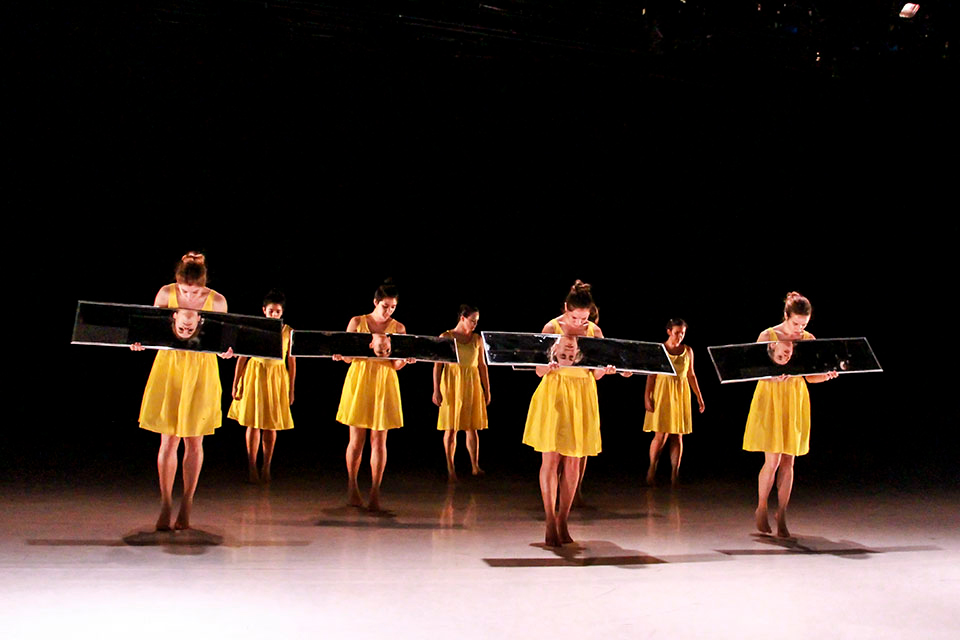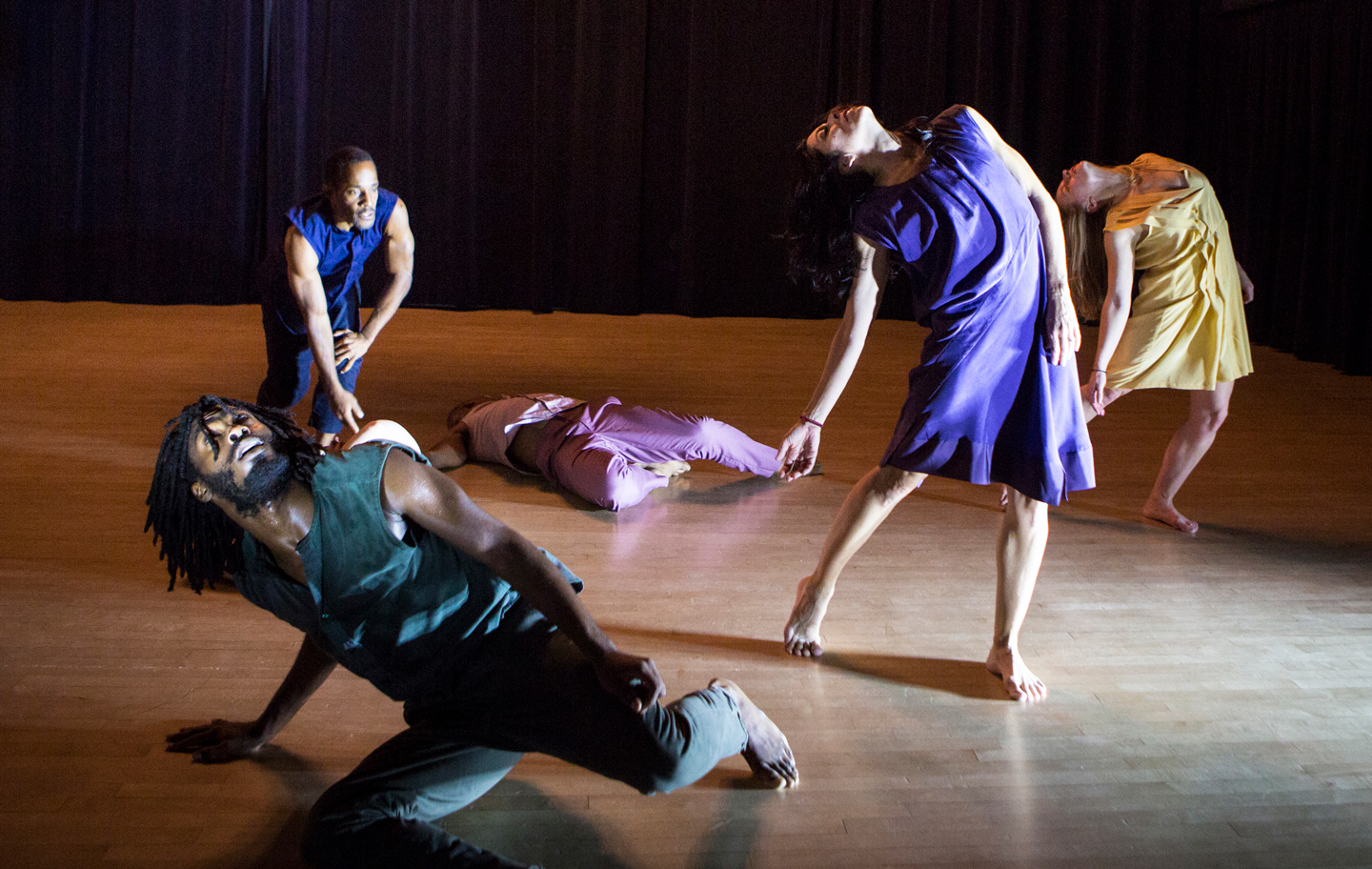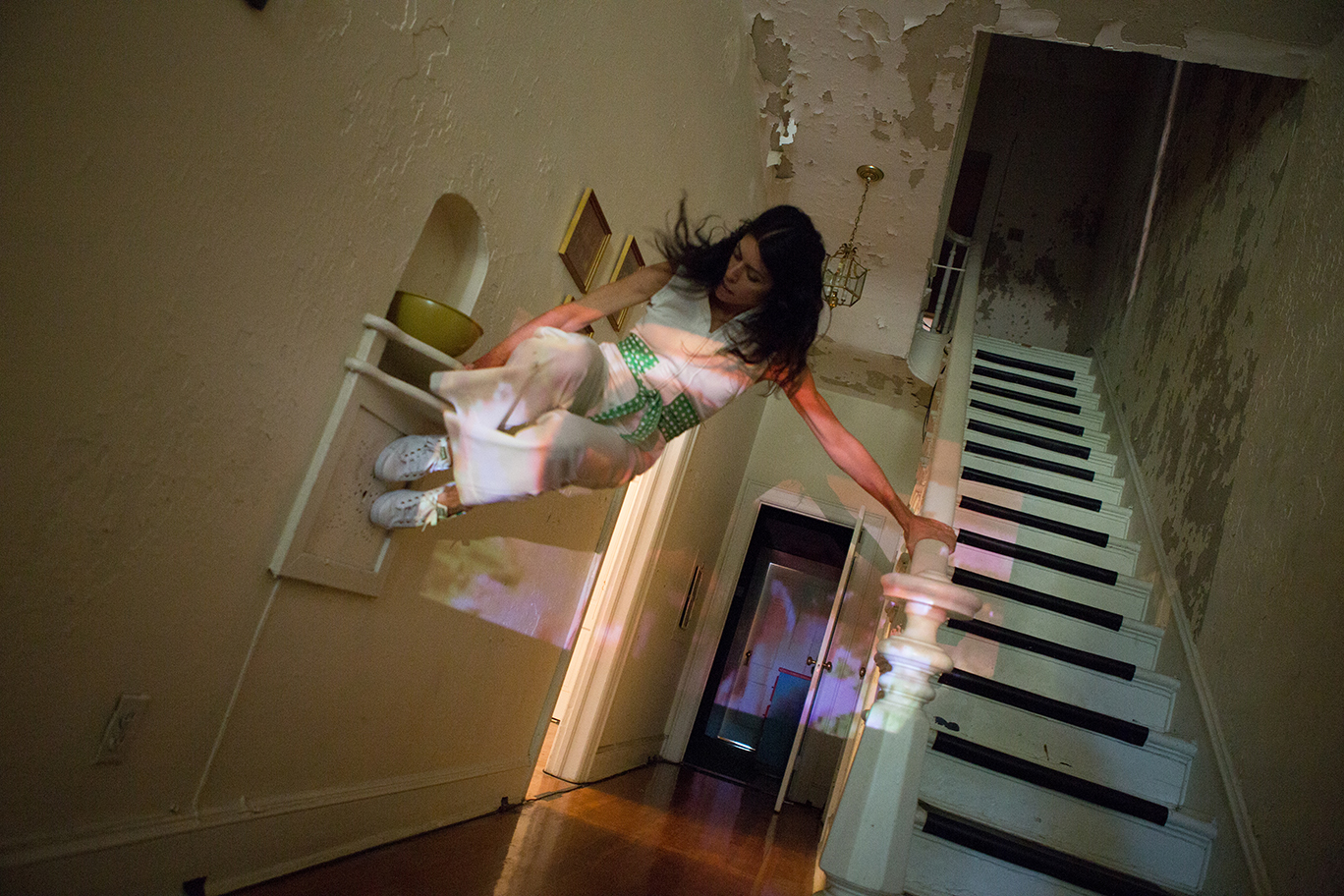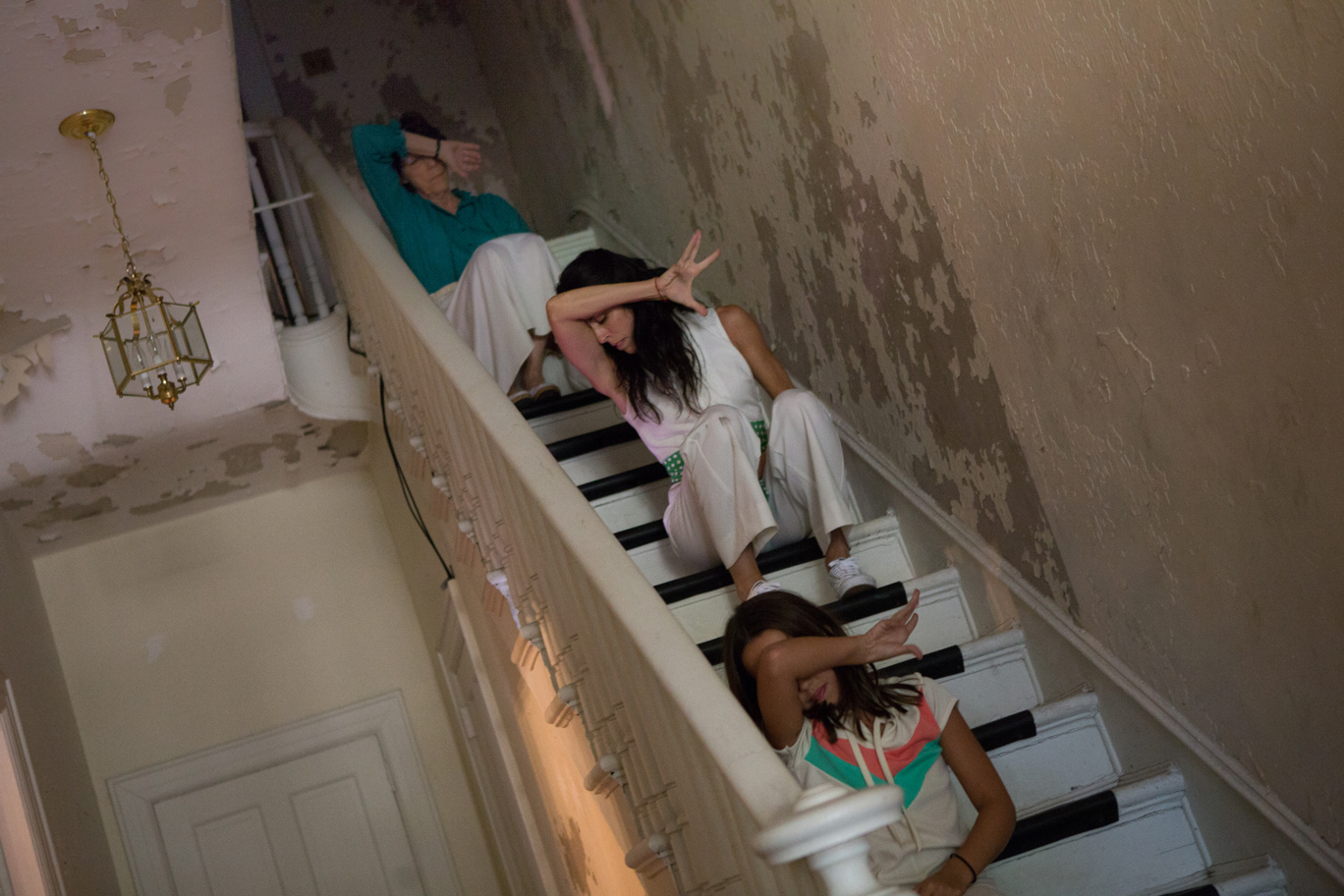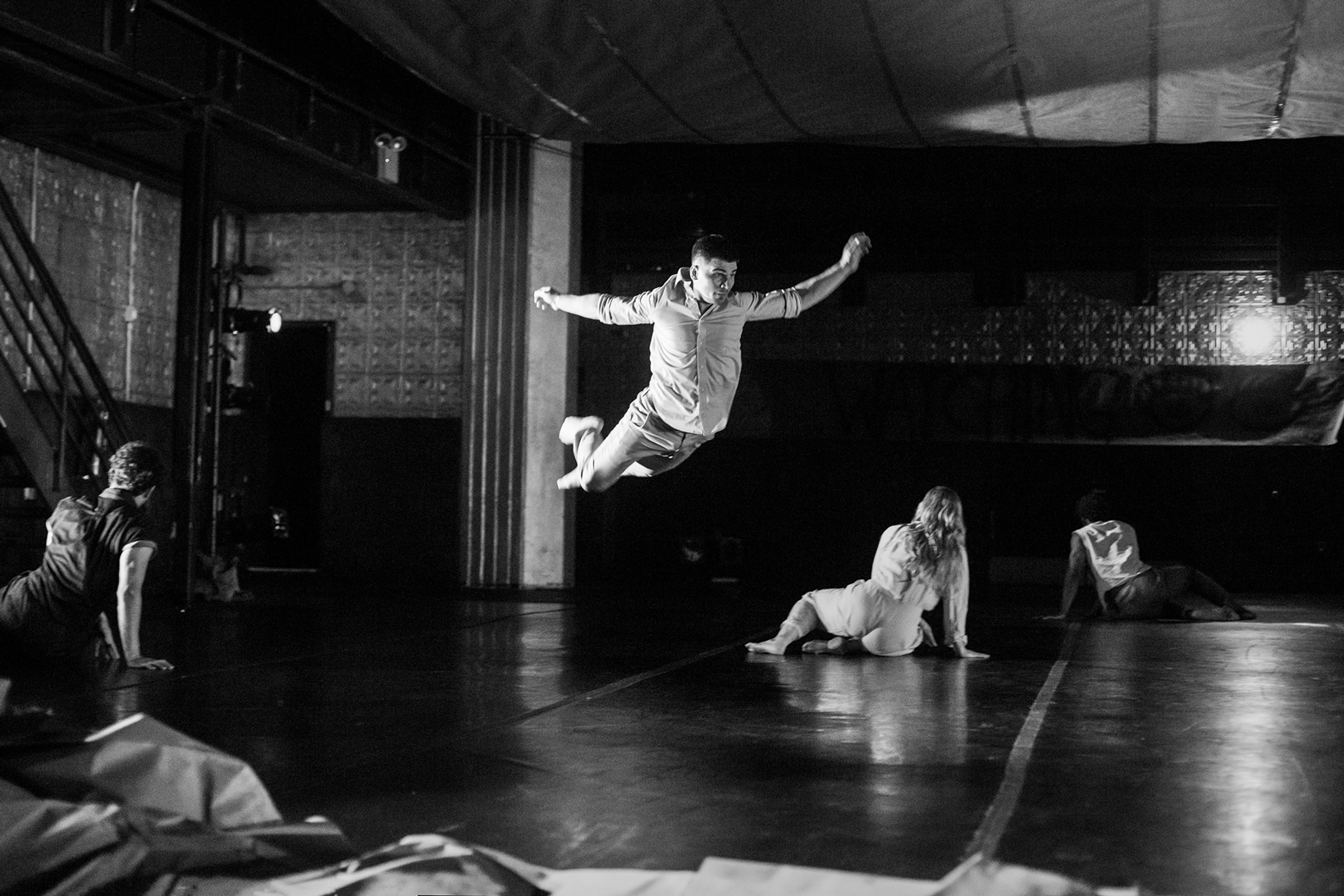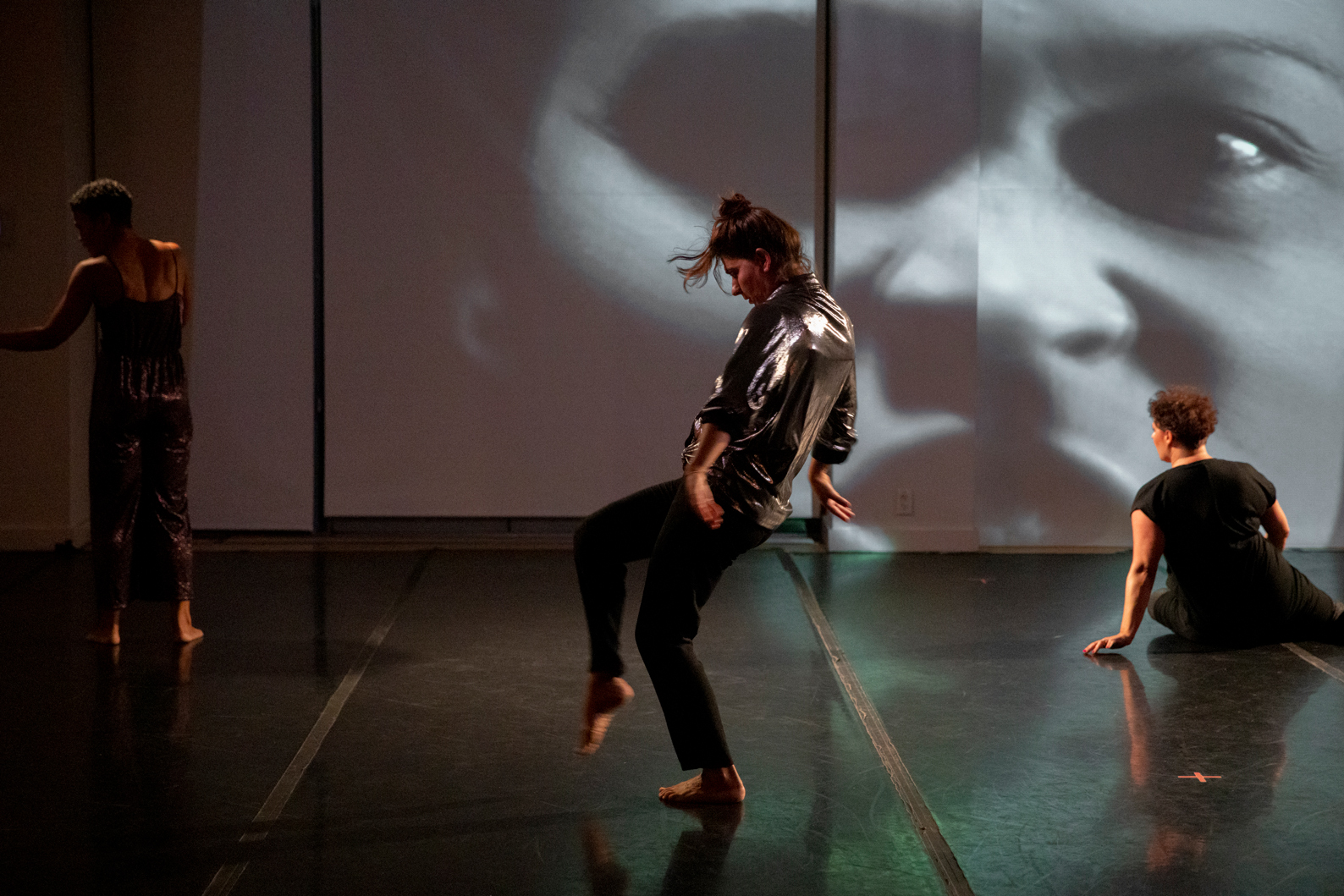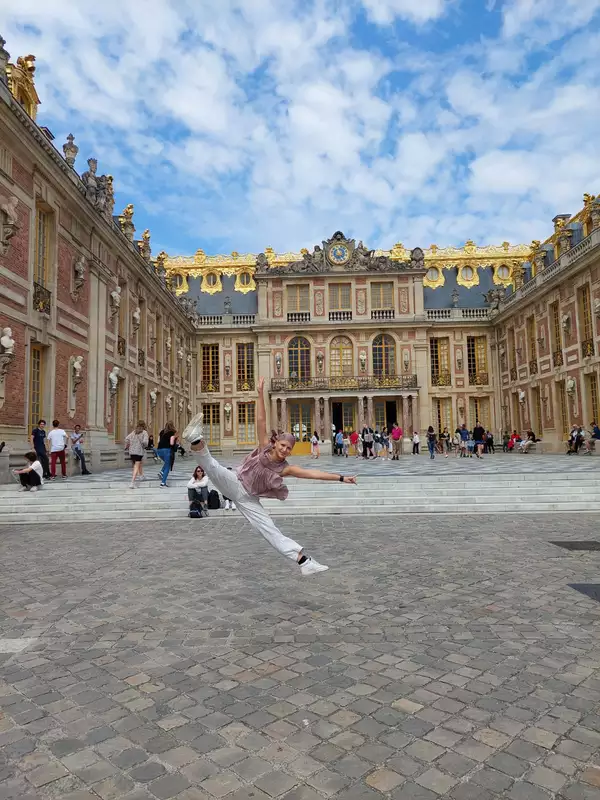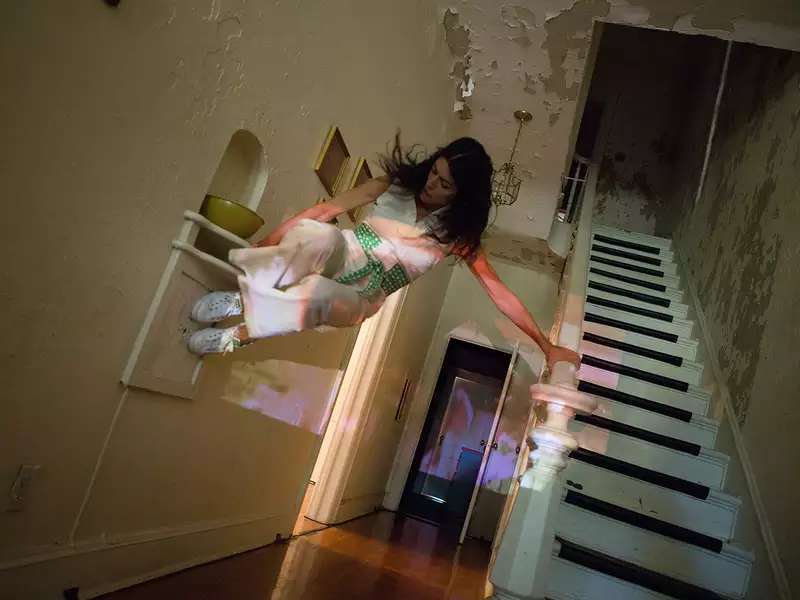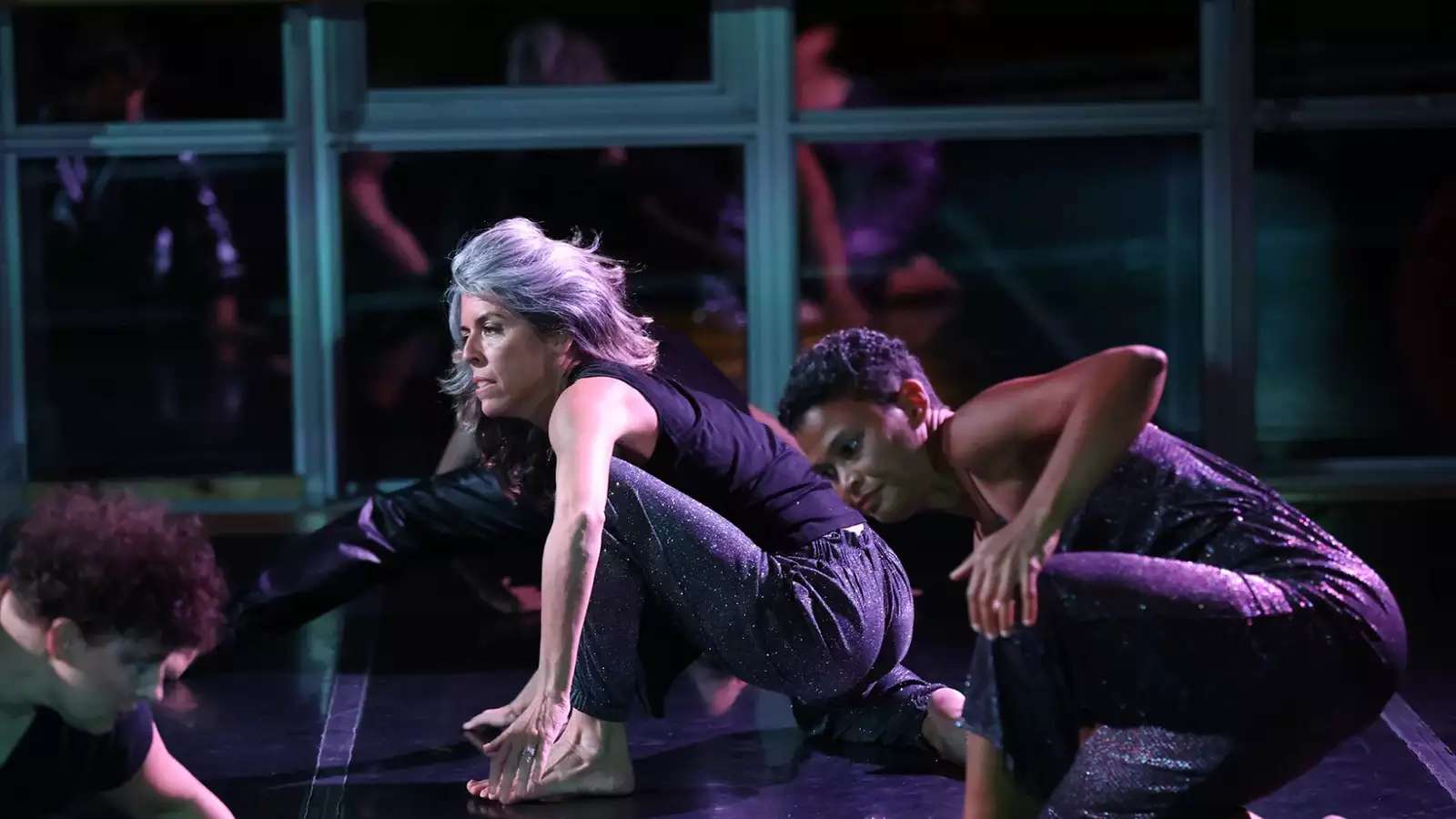
Lately, Colleen Thomas-Young, a professor of professional practice in dance, has regarded choreography as “a catalyst for radical, poignant, and exploratory work.”
She exhibited this creative activism in 2016 when staging a theatrical response to a sexual assault case on Columbia’s campus. And again last year, when she premiered light and desire at New York Live Arts to uplift the narratives of women who resisted oppression by creating their own forms of radical expression — collaborating with an all-female-identifying, international cast of dancers and longtime colleagues. Thomas-Young conceived and directed the show, and she and her five collaborators were nominated for a Bessie Award for outstanding performer. Winners will be announced on December 16.
“This piece was about women artists during fascist times — how we are ignored — and a main section in the work is the six of us trying to speak,” said Thomas-Young. “To get nominated for outstanding performer, when we have all been dancing in extraordinary companies for years, is pretty cool.”
The Bessies have recognized groundbreaking creative work by independent dancers in New York City for nearly 40 years. This year’s list of nominees includes MacArthur Fellowship and Tony Award winners and performances that took place at such famed NYC arts institutions as the Brooklyn Academy of Music and the Metropolitan Opera.
In 2009, Thomas-Young was appointed the University of Minnesota’s Cowles Chair, an annual guest artist position offered by the university’s Dance Department, and has been the recipient of several awards from the New York State Council on the Arts.
At Barnard — where she has long engaged students as collaborators in dance and as director of the Summer Dance in Paris program —Thomas-Young has represented the College’s annual “Women Changing the World” global symposia in Paris, São Paulo, and Shanghai and has received fellowship support from the College over the years for her company, Colleen Thomas Dance. In 2019, she received the President’s Award to support light and desire.
As The New York Times wrote in its review of light and desire, “The work has an implicit answer for how to get around the forces that silence women: Women must band together. That’s not just what happens in ‘Light and Desire.’ That’s what it is.”
About Thomas-Young’s productions — from her perspective
When reflecting on the work that stood out most to her, Thomas-Young said, “These five pieces [below] were a shift in my making. I started to feel like I had something important I needed to get across as I became more confident to speak my mind about the injustices in the world.”
Her(e) Again Untitled, 2014
“I started this work at Barnard for the Department of Dance’s annual student concert, Barnard/Columbia Dances at New York Live Arts — a major venue for experimental performance. The piece was a reaction to campus discussions around sexual assault.
“The students and I used images such as Emma Sulkowicz ’14CC carrying her mattress [a replica of the one Sulkowicz said she was raped on] and discussions about current student life on campus for inspiration on form and movement. We explored [the cast’s] personal experiences of sexism, catcalling, and support. The mattress made an appearance, and a skeleton of a dorm room emerged downstage right as the curtain fell.”
Her(e) Repetitive Blueprint, 2015
“This performance, which premiered at 92nd Street Y, began as I was reflecting upon my experience as a female artist and performer. The piece evolved to address what had become a daily reminder, via social media and news outlets, of the atrocities that people of color face in our country.
“The work begins with four women. Halfway through the piece, the women are replaced, in a blackout, by four African American men who do the same material. The piece progresses until everyone is on stage. By juxtaposing the dancers’ physical selves in this way, the audience is asked: How do we feel and what do we see when a blond, white woman crawls toward us compared to when an African American man does the same exact thing?
“The performances inspired a lot of interest, from Writing for Arts Journal, who applauded the work, to critic Eva Yaa Asantewaa including the piece on her 2015 list of ‘Most Memorable Performances.’”
To see why, watch the video excerpt below:
Welcome Home, 2015
“I went in a radically different direction from Her(e) to create an evening-length installation/performance in an abandoned home on Governors Island for two days. Welcome Home was supported by the Lower Manhattan Cultural Council (LMCC), the Harkness Foundation, and Barnard’s Office of the Provost.
“It was an opportunity to deepen the audience’s experience of moment and place and to compare political climates in the 1970s to the summer of 2016. I grew up on Governors Island, and the work took place in one of the Coast Guard family homes identical to one in which I lived. Inspired by my father's photographs from my childhood, the work addresses the ways that our earliest experiences of home remain in our bodies through adulthood. Throughout eight rooms designed to recreate the feeling of the 1970s, audience members were invited to follow the paths of 12 performers — including my parents and my children — through the house.”
The full video is available to watch here.
but the sun came up and we were here, 2018
“This show premiered in Lublin, Poland, in November 2018 — with dancers from Belarus, Ukraine, Poland, and the U.S. — and came to New York City, in May 2019, to open the La Mama Moves! Dance Festival. It was supported by Barnard College, the Trust for Mutual Understanding, the Adam Mickiewicz Institute, LMCC, and the International Dance Theatre Festival in Poland.
“Here, the performers’ individual architecture and history collide with questions about self-perception and the human connection in a climate of worldwide political and social unrest. What are the limits, or possibilities, of a sense of belonging amid rising fear and tension? The piece asks if the expression of individual essence, intuition, and power could be the antidote to a fractured world.
“Earlier this year, faced with the Russian invasion of Ukraine and the surreality of displacement, death, and destruction, we reunited. In June 2022, I created a film of the dancers’ perspectives on the work, then and now, for Creative Horizons: Art in the Post-Soviet Era, a series supported by the University of South Florida (USF) and produced in collaboration with USF, the University of Arizona, and Miami University in Ohio.
“The event was hosted by Columbia Global Centers’ Reid Hall in Paris for a live and online audience. After the film, the dancers and I talked on Zoom about the work, the impact of war, the influx of refugees in Poland, and our concern for one performer, Danil, who remains stuck in Ukraine.”
Click here to watch a video of the performance.
light and desire, 2021
“The sold-out New York Live Arts premiere was monumental for us after waiting two years to show the work. The dancers’ experiences of war, immigration, racism, and sexism are at the core of this work. I began light and desire with a lot of anger and concern over the misogyny I saw in our country in 2016.
“Developed through international workshops and performances, the piece gained a new relevance and urgency during the pandemic. The female-identifying part of the population was hit particularly hard by the emotional stresses of juggling families and professional lives, caring for sick relatives, and a diminished presence in the workforce.
“I was inspired by the change-making mentality and strength of the 11 Barnard/Columbia women [below] who joined us on stage [as the chorus].”
The Chorus
Eleanor Altholz ’18
Emily Giovine ’10
Nadia Halim ’19
Garnet Henderson ’13CC
Falls Kennedy ’17
Morgen Littlejohn ’19
Sadi Mosko ’17CC
Nicole Rondeau ’18
Carolyn Silverman ’17
Kennedy Thomas ’19CC
Madeleine Wood ’19
